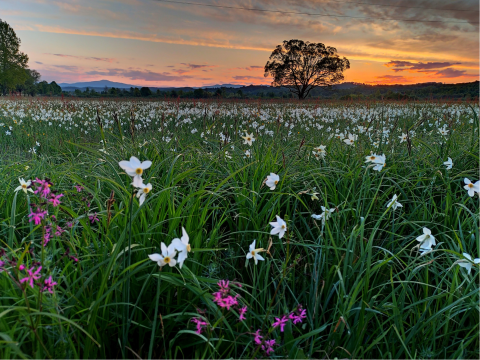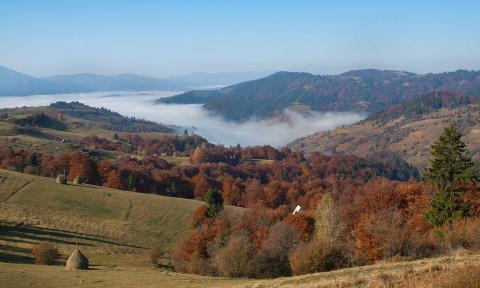
Restoring wet meadows in climate change environment

About this good practice
The Ramsar Site "Narcissi Valley" (256 ha) is not only a critically important biodiversity hotspot for Ukraine, but its wet meadow habitats are also severely endangered within the broader Black Sea Basin landscape. This site hosts the largest population of the rare Narcissus poeticus in the Central European lowlands, alongside 19 other plant species and 24 animal species listed in the Red Data Book of Ukraine and on international conservation lists. Climatic changes in the hot lowlands of the upper Tisza River basin have altered the hydrological regime, resulting in drier conditions and a decline in traditional grass mowing and grazing. These changes have encouraged the growth of bushes and trees, leading to frequent fires and a 70% decline in the narcissus population over the last decade. Summer heatwaves, reaching up to 42 degrees Celsius, and extensive water usage upstream have significantly changed the composition of wet grasslands. Furthermore, the war has severely diminished human and technical capacities. It appears inevitable that without enhanced conservation measures, the site may lose its unique natural values and its Ramsar status. Conservation management activities have been implemented and are ongoing, primarily aimed at raising the groundwater table, restoring the flooding regime, increasing the water retention capabilities of habitats, mowing grass after fruiting, eliminating bushes and trees, restoring wetland habitats, and establishing water buffalo grazing.
Expert opinion
Resources needed
Site management: Human capacity costs €14,000 annually, technical support amounts to €3,000, and investment costs (tractor and fuel) total €17,000. Therefore, the total annual cost is €34,000. However, with the return to traditional agriculture, this is reduced to €17,000.
Evidence of success
The cover of daffodils has increased by an average of 23% across a total area of 120 hectares, with some areas showing an increase of nearly 40%. The vegetation cover of the other 19 red-listed plant species has risen by over 10%. The number of wildfires has decreased sixfold; wet meadows covering 120 hectares have been wholly or partly restored; groundwater levels have risen by 50%; and a large barn, named "Buffalo Dwelling", has been constructed to expand the herd of water buffaloes.
Potential for learning or transfer
This site has the potential to learn how to restore wet meadows in a severe climate change environment, which are highly sensitive to climate change and dependent on traditional agriculture. The ongoing impacts of climate change indicate that restoration work is far from complete and requires additional resources. The key to success lies in the simultaneous management of various factors, including retaining water by raising the water table, restoring the flooding regime, maintaining traditional agriculture (buffalo, cow, sheep grazing), and mowing grass after fruiting, as well as restoring the populations of red-list species and eliminating bushes and trees. The site also aims to preserve natural values in a war-affected environment with limited resources.
Further information
How to save the Narcissus Valley?
Images


Documents
10-Narcissi-Valley-v02.pdf
Website
Good practice owner
You can contact the good practice owner below for more detailed information.

